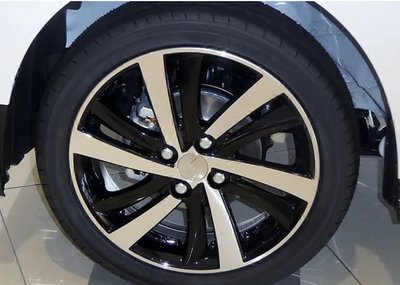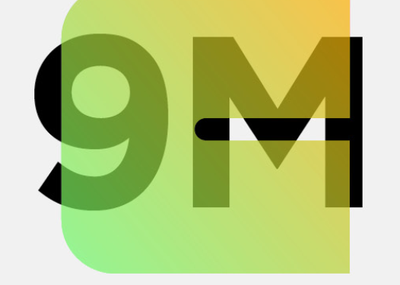Following this year’s Foundry on Wheels event, Foundry Planet spoke to presenter Dr. Andreas Werner, Head of Application Development at Clariant’s Business Unit Functional Minerals, to discover how the specialty chemicals company uniquely engages iron foundries in its product innovation journey to ensure automotive industry casting challenges are met head-on.
Q. Clariant has developed additives for green sand casting processes for many years. Is delivering innovation to foundries serving the automotive industry particularly challenging?
The crucial element is providing innovation that makes a positive, viable contribution to the day-to-day challenges a foundry faces. The automotive industry is going through unprecedented and fast-paced change. For those manufacturers of application-essential green sand cast parts, there’s significant pressure to adapt quickly. To help these foundries to reach the next level to survive as parts suppliers, it is vital any innovation understands what the real job is, tackling OEM’s demands for lower production cost and quicker production of higher quality castings. And with a sustainable solution, of course.
Q. You see Clariant’s green sand casting mold binder LE+ Technology as an example of innovation focusing on the job-to-be-done. Tell us more.
Back at the start of this decade, Clariant was a traditional, specialty chemicals company that only went to market with a completely finished product. The downside of that approach to innovating is the potential of failing to solve very specific challenges, fundamentally through a lack of first-hand knowledge of the scope of needs. Our immediate customers – in this case the foundries – have direct experience of the demands driven from further down the value chain. If a new product we’ve developed doesn’t help them respond to current market environments, we are probably not delivering on the actual job to be done. And our customers likewise. So no one gets the outcome they need.
Those days are long gone at Clariant. We’ve adapted ourselves to take a much more structured approach to innovation using the concept of taking “ideas to market”. Removing the jargon, we focus from the outset on scouting out the needs of our customers, working together to understand the whole problem and consequences before defining the solution. Next, we involve them in the development process through pilot offerings and test marketing, getting their feedback to make sure we stay focused and responsive to any changes that may be necessary to meet the defined goal.
As a result, our innovations are presented to the market much earlier than previously. But through this intensive degree of communication and collaboration, the intended benefits can evolve, they bring the needs of the final customer into the development equation, because after all, these are the ones making demands on our direct customers. This was the journey we took with our customers in developing Low Emission or LE+ Technology.
Q. How did the innovation journey for LE+ Technology stand out specifically?
In a nutshell, it enabled us to unlock more casting benefits.
Through our extensive experience as a supplier of lustrous carbon formers and green sand binder to foundries, we were well aware of the increasing environmental regulations. We initially entered the LE+ Technology innovation journey to provide the industry with a solution to reduce BTEX emissions. These are the volatile toxic organic substances Benzene, Toluene and Xylene, which are emitted during the casting process, generated by pyrolysis from the lustrous carbon builder and organic bound sand cores. Emissions coming from core and mold sand binders are an occupational health concern for many foundries. We were keen to find ways to recreate the lustrous carbon effect of improving the surface quality of castings, but without generating BTEX.
However, applying our new innovation process, we quickly found out from the market that emission reduction alone wasn’t the answer foundries needed. It wasn’t enough for iron foundries to justify making the switch. They needed a performance benefit too, something that would provide an economical as well as ecological solution so that they could meet the high demands of automotive OEMs.
Their feedback opened our minds to developing a competitive molding system with low BTEX emissions that could produce high quality castings with less defects and with more castings per hour from existing equipment. We incorporated these factors into the development direction of LE+ Technology.
We found that flowability increases with the use of graphite - at the heart of our solution - as a lubricant. It´s also a more efficient lustrous carbon former, without the downside of generation of harmful emissions. By taking LE+ out to customers like the French PSA Groupe at an early stage, we were able to confirm significant reductions in BTEX emissions of up to 80% for their system. And we also saw first-hand that ensuring better flowability of the Low Emission binder system leads to better mold quality as well as higher productivity.
The productivity element was one of several beneficial surprises we discovered during our testing phase with customers across Europe. We developed an in-house measurement process to enable customers’ systems to be closely monitored during the implementation phase, and this has been incredibly valuable to all sides in showing the difference the technology makes, and how we can best support them in making the switch.
Q. What kinds of benefits did foundries report?
In terms of lowering production costs, LE+ leads to less consumption of green sand molding additives, and through this also less waste sand creation.
In terms of higher surface quality, because of the high degree of lubrication the technology offers more homogenous compaction of the mold and improves arrangement of the green sand. This results in the avoidance of metal penetration and lower erosion during pouring. And ultimately, high precision castings with overall higher surface quality.
Q. Can LE+ Technology evolve further or is its job done? Can the industry expect more benefits to come?
Positive benefits have come to light already, but our LE+ journey keeps on going. We’re continuously working on our processes, exploring the system because we feel we haven’t reached its limitations yet. Through close cooperation with our foundry customers we are constantly getting a better understanding of the characteristics and the benefits of our product. The extensive possibilities it offers are the reason why we call it LE “plus”.
To give an example. During recent work with a new customer looking to use LE+ in their green sand process, it became apparent that LE+ addresses an important safety and security element for foundries. As this technology reduces the amount of carbon in the casting mix, there’s less risk of explosion during material handling processing. This is a big consideration for some foundries. And it’s an aspect for us to highlight that we perhaps wouldn’t have emphasized had we not been talking and listening to our customer.












